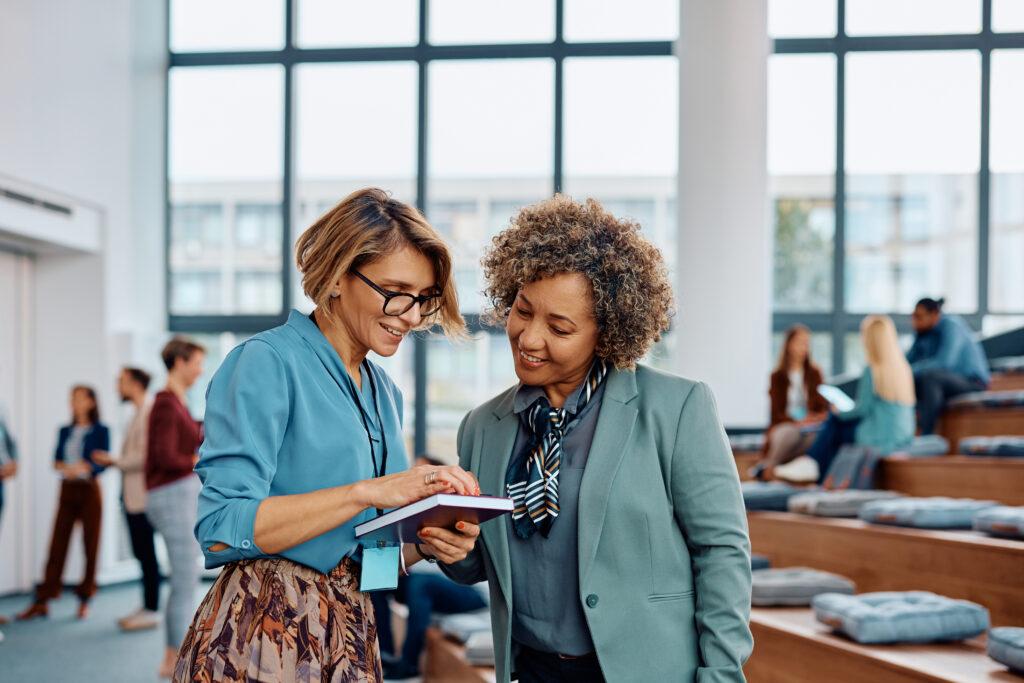The Future Of Community Is ‘Phygital’: Here’s Why It Matters

“Phygital” experiences, which merge the physical and digital world, are not just for ease but to enhance and enable connections that span both online and offline spaces.
The digital age promised effortless connection: seamless, efficient interactions at our fingertips. But as our online lives expanded, a question emerged: Does effortless always equal meaningful, especially when building community? Deep connections often require showing up, tangible presence, and yes, effort.
So, how do we bridge the gap between digital convenience and the substance of real-world interaction?
Understanding modern community requires acknowledging how integrated digital life has become.
“For younger generations especially, the distinction between online and offline interaction is fading,” urban futurist and speaker Lucinda Hartley wrote in her Substack analysis. “Many Gen Z and Millennials communicate with others more digitally, than IRL (‘In Real Life’) and see online spaces as extensions of their lives.”
What Phygital Looks Like In Practice
This integration isn’t just theoretical; it manifests in countless everyday scenarios. Phygital experiences are already woven into the fabric of our communities, often facilitated by the smartphone, which Lucinda calls the “new wallet.” Think about scanning a QR code at a local park for historical information, ordering ahead at a neighborhood cafe via an app for quick pickup, or using GPS to track a run through local streets. As Forbes contributor Paul Prior explained in a 2021 Forbes Councils article, it is present even in smart sensors controlling lights in public squares and in innovative retail models, like Amazon Go’s contactless stores.
Recognizing this trend, platforms like Eventbrite have identified the rise of “Fourth Spaces™”, gatherings designed to “transform online interests into meaningful real-world connections.” According to their research, these spaces, driven largely by Gen Z and Millennials and fulfill crucial community needs, with 84% of attendees reporting they developed close friendships through such interest-based events.

The Evolution Of Phygital
This phygital blend didn’t appear overnight. Its growth tracks alongside our increasing reliance on digital technology for all aspects of life. Paul notes that the concept gained traction partly as businesses realized physical experiences remained vital but could be enhanced by integrating digital capabilities, rather than being wholly replaced by e-commerce. This evolution was significantly fueled by exponential digital adoption, according to the Forbes analysis, and the expectations of younger, “extremely online” generations whose primary orientation is digital, as observed by Lucinda.
The trend towards near-total digital payments, foreseen by a majority of Gen Z and Millennials according to Lucinda’s research, further cements the need for these integrated experiences. Consequently, this ongoing merger drives a massive demand for data and robust digital infrastructure, making reliable networks a fundamental consideration for future community planning, as Lucinda argues.
How To Embrace Phygital Communities In Your Area
The drive to participate in these blended physical and digital communities often stems from a search for connection and identity. Eventbrite’s research found that 45% of people cited belonging and identity as key motivators for joining “Fourth Spaces,” highlighting the role these gatherings play in fostering community and self-discovery beyond the screen.

So, how can you actively participate in and help shape the phygital communities emerging where you live? It often involves intentionally leveraging both digital tools and physical presence. Here are a few ways:
- Engage in Hybrid Local Events: Seek out community meetings, workshops, or library programs that offer both in-person attendance and options for virtual participation or viewing online.
- Join Hyperlocal Online Groups: Connect with neighbors via platforms like dedicated Facebook groups, Eventbrite, or Discord servers focused on your town, especially those organizing real-world meetups, local resource sharing (like Buy Nothing groups), or volunteer efforts.
- Support Phygital Local Businesses: Choose local shops and restaurants that blend their physical presence with digital convenience by using their apps for ordering/pick-up, engaging with online loyalty programs, or attending their in-person events promoted digitally.
- Utilize Civic Tech (And Show Up): Use your local government’s apps or websites for practical tasks like reporting issues or finding information, but also make an effort to attend key physical town halls or council meetings where in-person dialogue occurs.
- Explore Interactive Public Spaces: Engage with phygital elements in parks, museums, and libraries – scan QR codes for extra information, participate in app-based tours, or use digital interfaces to book physical resources or activities.
- Connect Through Shared Activity Groups: Join local fitness or hobby groups (often found via apps like Meetup) that use digital platforms for organizing but focus primarily on bringing people together for real-world group activities.
So, perhaps calling phygital the “future” of community misses the mark, as it’s very much the present. Our daily lives already weave together digital tools and hyper-local experiences, a blend that, as we’ve seen, has developed intentionally over time, merging digital efficiency with the substance of real-world interaction. Understanding this ongoing integration allows us to be more conscious participants. By actively embracing hybrid events, local online groups, and civic tech in the ways discussed, we aren’t just adapting to change but helping shape communities that leverage the best of both worlds.






